The second day of the holiday was spent in Ironbridge. We started with a quick visit to the museum of the Gorge, where there was an interesting model of how the gorge had been, with ironworks, mines, inclined planes, barges and roadways (with horses and carts – which in the model had no drivers!!). It was a good overview of what had been there – with the River Severn as the main transport link. We then went to look at The Iron Bridge – the first bridge made of iron in the world.
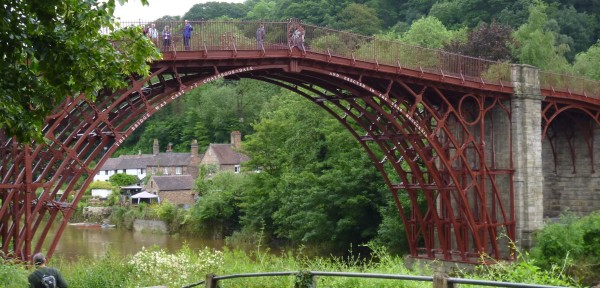
We had a short time to go onto it or walk across it if we wanted.
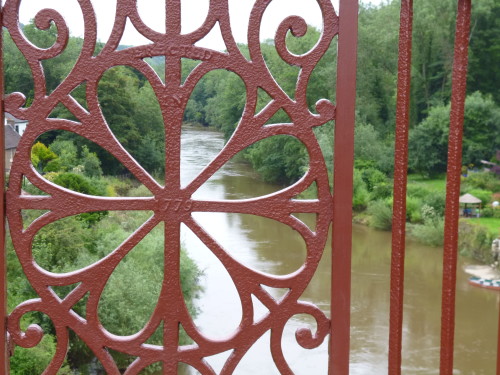
We the went on to The Museum of Iron and the blast furnace Abraham Darby used when he first made pig iron using coke not charcoal.
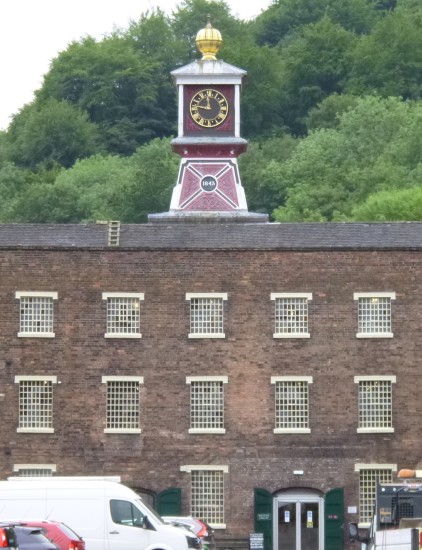
Before we went into the museum we went to look at the (remains of the) furnace that Derby used. It was rented, having previously been used by someone else who had used charcoal.
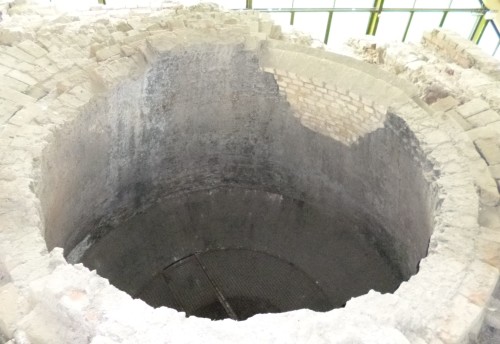
Derby used a waterwheel to work the bellows to heat the furnace hot enough to produce the pig iron using coke. Coal cannot be used because of the impurities.
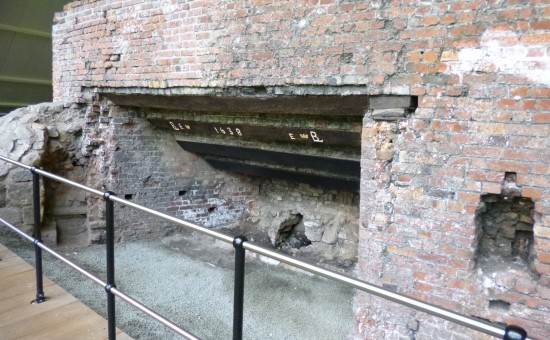
The iron came out into sand.
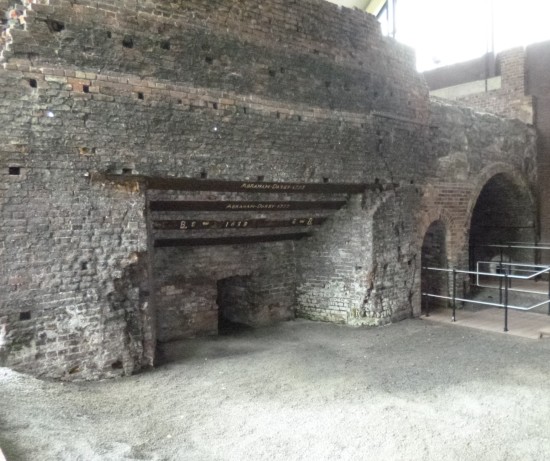
Derby’s casting process meant the iron could be used for pots etc which were much thinner than those produced previously. He was also able to produce much larger quantities than had been possible using charcoal. His son and grandson – Abraham Derby II and III (!) improved the process so that large amounts of cast and wrought iron could be produced that was strong enough for things like steam engines and railway lines – and of course bridges! This was the start of the Industrial Revolution.
Having looked at the furnace we had time in the museum – but not enough to look at everything and take it in. There was so much that I didn’t know where to start and didn’t take in that much – so have had to look up things later. I didn’t think I was really interested in iron, but our leader and seeing these things has made me want to find out more!
We had lunch outside the Museum of Iron and then went on to the Blists Hill Victorian town. This has a few features that were there originally like the mine shaft, inclined plane, remains of blast furnaces and brick and tile works.
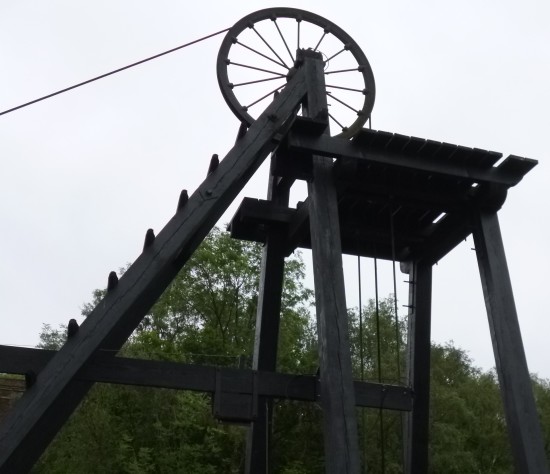
The winding wheel was worked by steam.
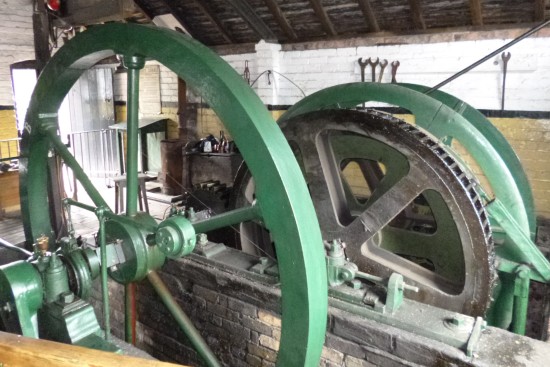
Most of the rest of the village has either been brought from somewhere else or is a copy of a building from somewhere else. There was a forge, a sweet shop, a chemist (with dentist chair and drill!), a haberdashers, the doctor’s surgery, a couple of pubs, a bank and almost everything else one would have in a small town.

We could go into some of the houses (as well as all the shops) and this room was one I liked.
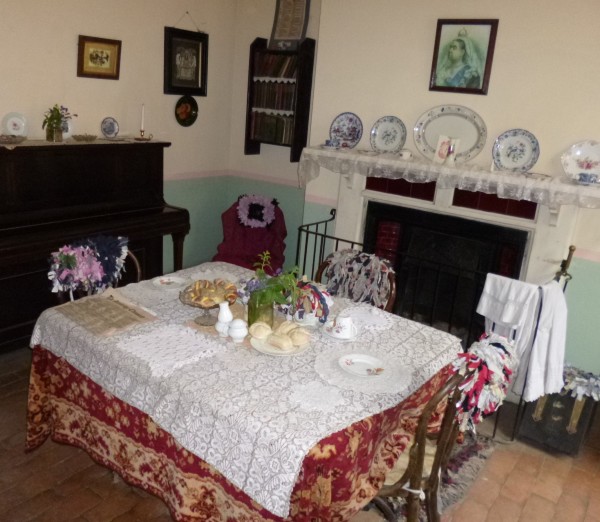
I also liked the school – and the very stern school mistress keeping the (visiting) pupils in order! My favourite bit was the fairground.
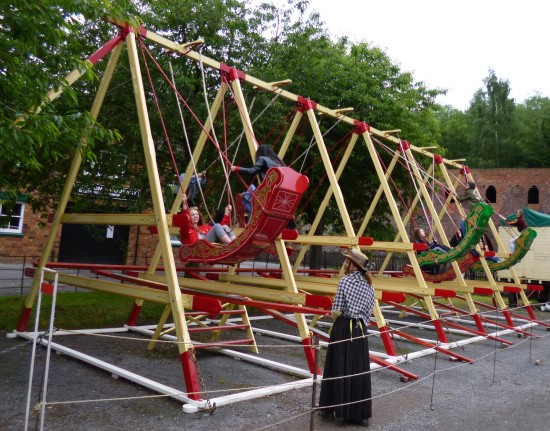
Especially the carousel, which I had to have a ride on!

Just before we left we found a steam engine made by Richard Trevithick – not sure if it was a real one or a model.
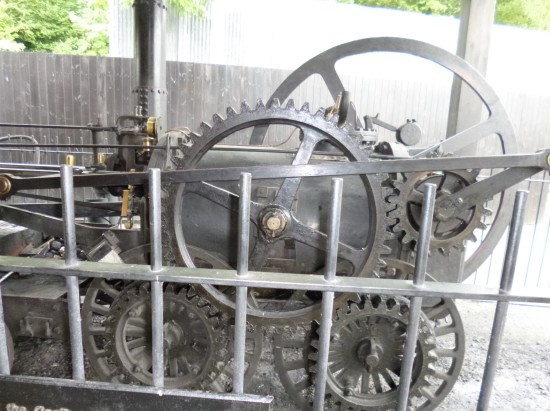
It was suggested to us that his engines were not made to be ridden on but to walk alongside as one would a horse, so the platforms were added afterwards.
There was actually loads to look at and we could have spent the day there – even though the purists would say it was “fake” and a theme park not “real history”. We went back to the hotel from there, for next day’s briefing and dinner.
Was it another good day? Yes, even the things I didn’t think would be very interesting were good and provided new things to learn and I really liked Blists Hill – especially my ride on the carousel!